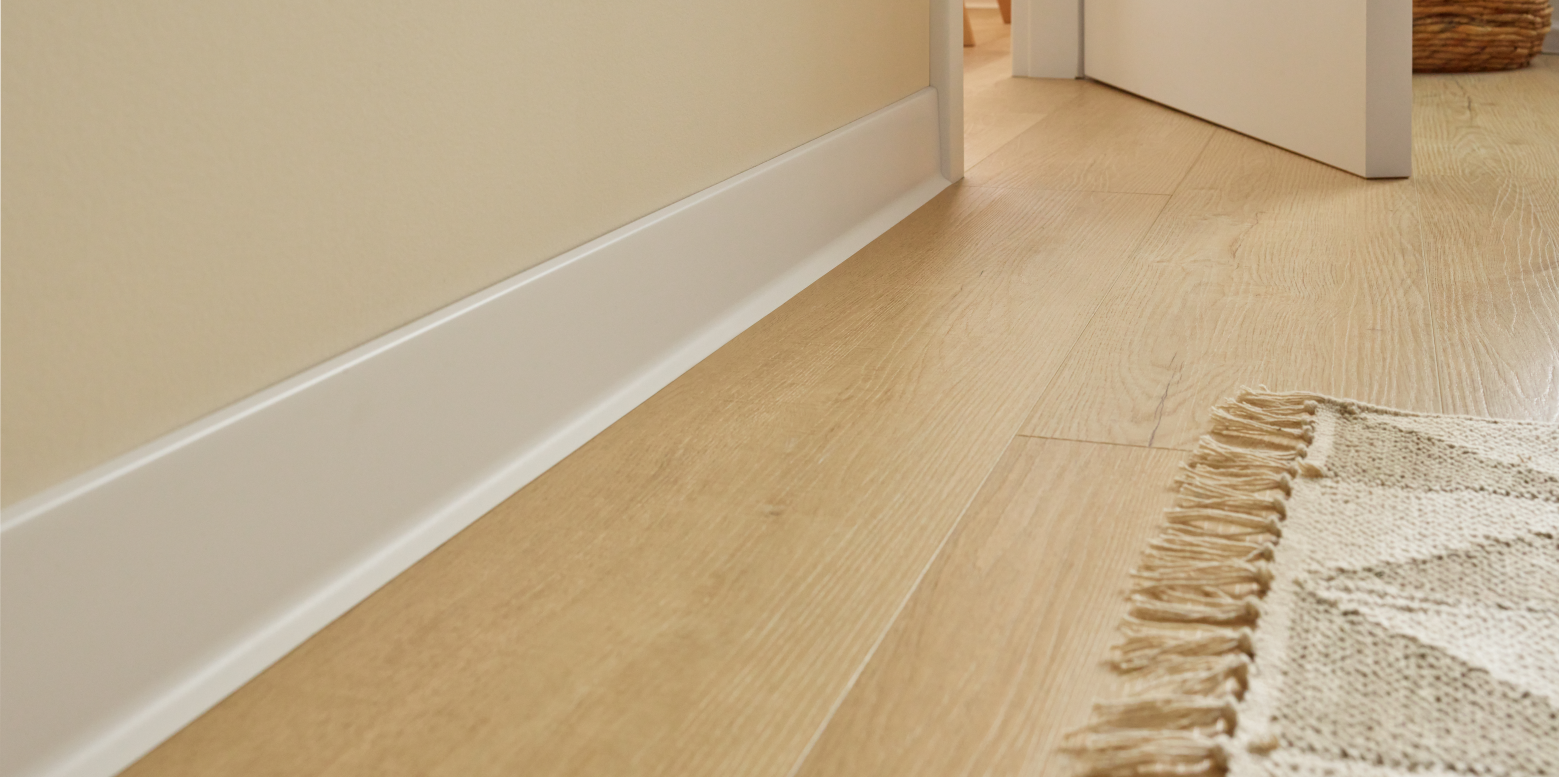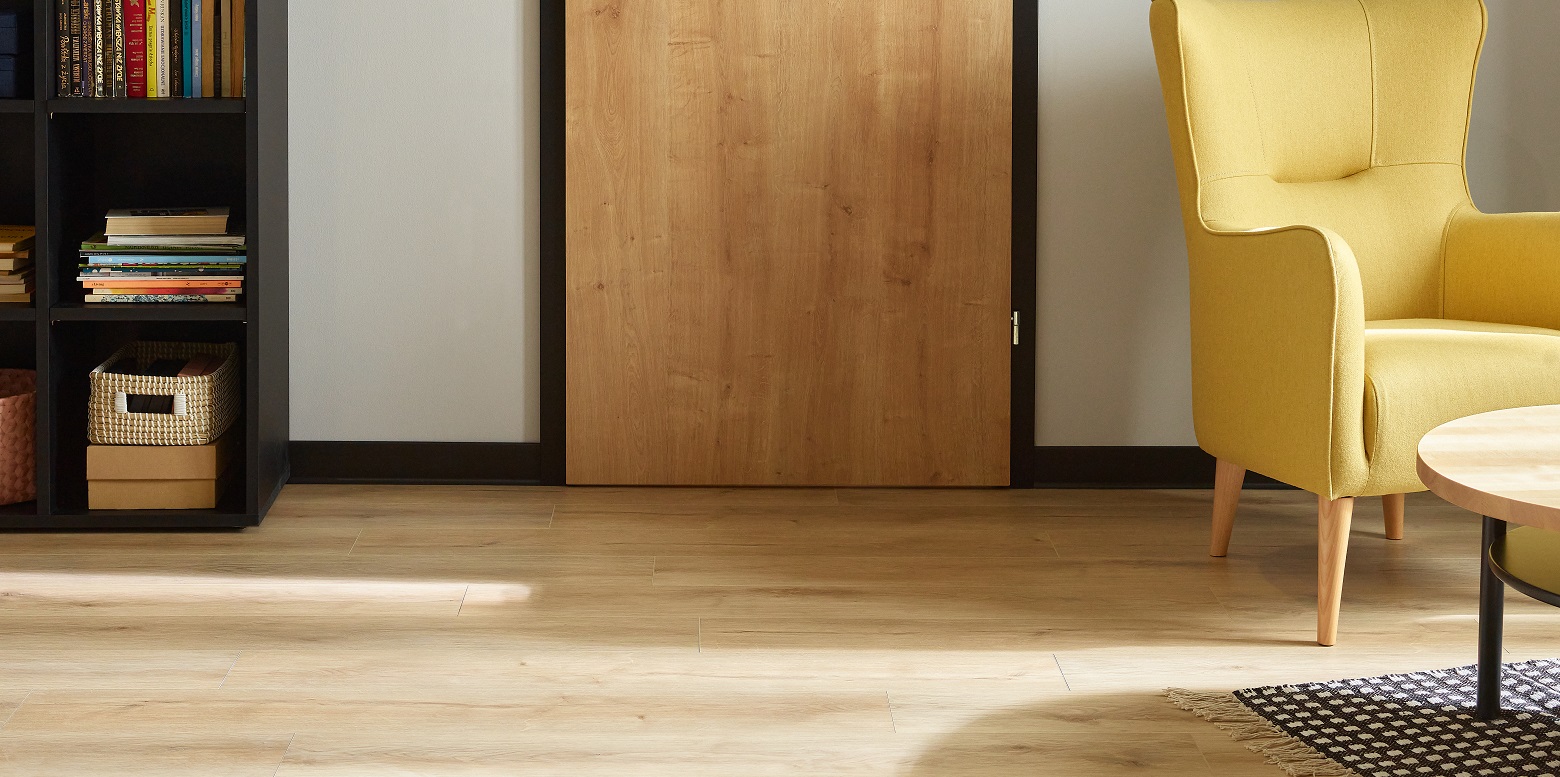
Skirting boards – a practical and pleasing finish
Details matter. In interiors, some details often go unnoticed as we use our rooms every day. But without them the interior would look bare, as if it were unfinished. We are, of course, talking about skirting boards. It’s the final touch in a room. See exactly what you need to know about them and how to choose the right skirting boards for your rooms.
Why use skirting boards?
Skirting boards have a number of advantages that allow them to complement the interior design, but also to cleverly conceal what should not be visible – for instance, floor-wall joints. Here are their key benefits:
• covering up expansion joints where the floor meets the wall;
• some models allow you to hide cables that run along the walls;
• protecting the lower part of the wall from dirt;
• reducing the risk of damage to the lower part of the wall caused by moving furniture or cleaning;
• the perfect complement to the rest of the interior;
• a way to emphasise a particular style and colour scheme.
What should I consider when choosing skirting boards?
Choosing a skirting board may seem like a trivial matter. However, it is well worth taking a moment to have a good look at it. This will ensure that the look of the room is consistent and elegant. Technical specifications that will allow you to use your products for many years are also important. When selecting a skirting board, pay particular attention to these issues:
• skirting board material – it affects its functionality and durability as well as its appearance. For many people, value for money will also count. In this respect, skirting boards made of PVC (polyvinyl chloride) are the best option (you will often see misleading PVC designations on these products). This material is resistant to moisture and damage that can occur during regular use. Vilo models are a case in point;
• installation method – with a correct adhesive or dowels, you can install skirting boards with no interference. You can read more about skirting board installation below;
• appearance – when it comes to the look of the skirting board, think of the elements that are already in the interior and choose one that will match them. You can choose different heights, widths, shapes, and colours. Note that manufacturers offer either one-colour or textured skirting boards, usually matching the natural grain of the selected wood species.
How do I choose a skirting board to match the interior?
The most common rule of thumb when selecting skirting boards is to match the colour of the panels. You can opt for an identical colour or one a tone lighter or darker. Another interesting solution would be to choose panels and mouldings with a similar pattern matching the wood grain. One-colour mouldings have also gained in popularity in recent years. They are often used in interiors with a minimalist, modern design or ones where it is difficult to select a skirting board that perfectly matches the colour of the panels. The most common shades of skirting boards are grey, black, and white. Here we have two options – choosing a colour to match the wall colour or one that will contrast with it. In the first case, you get the effect of visually lengthened walls. In the second, the walls will seem shorter.
Sometimes, skirting boards in the colour of the door frames or the door itself are chosen to increase contrast and make the decorative elements on the wall and above the floor pop.
Does the shape and height of the skirting board matter?
Do you like to take care of every single detail in your rooms? Pay particular attention to the height and shape of the skirting board. Simple, minimalist ones will be more versatile and you can use them in virtually any type of interior, only varying the colour to match the other elements in the room. You can also choose models with more imaginative shapes to suit a particular interior style. For example, skirting boards with a milled surface will look good in Provençal or classic interiors. Smooth ones with slightly rounded ends will fit in well with the glamour style.
The height is also important. Tall skirting boards, such as the 8 cm Linela, can be an interesting choice. By choosing a model in a colour similar to the floor, you will achieve the effect of optically enlarging this space. This will help to “widen” the interior somewhat. If, on the other hand, you want to make walls slimmer and optically elongate them, choose skirting boards that match their colour.
How do you install skirting boards?
Until recently, the most common way to install skirting boards was to drill in the wall and use dowels. However, this comes with a risk of drilling through the electrical installation. Some people also do not have the specialised equipment to drill the holes for the dowels. This is why our Linela skirting board can be installed with no interference. All you need is the right adhesive and basic tools that most people have at home or can easily find in DIY shops.

Installation with adhesive has many advantages. Among the most important ones is the fact that there is no interference with the wall. It is also a quick way to finish the floor and accentuate the interior style. Adhesive-mounted skirting boards are also a good solution for people who rent flats and cannot or do not want to drill in the walls.
See how easy it is! Take a look at the installation videos and find out how installation with adhesive actually works.
How do you care for skirting boards?
The type of care your skirting board needs depends on the material it is made of. PVC skirting boards are the least troublesome. They also do not require any additional care or maintenance, which many will find important. You can just wipe them with a dry cloth, and for a more thorough cleaning – with a damp cloth. You can also clean them when cleaning the floor, as they are moisture-resistant. Note that skirting boards made of other materials may require different care. For example, skirting boards made of wood need to be protected against moisture and dirt with varnish or stain. In the case of varnished aluminium boards, remember to limit their contact with anything that can cause scratches, e.g., sharp objects or sand. Remember, too, to carefully read the manufacturer’s cleaning guidelines for the product in order to preserve its properties for as long as possible.



